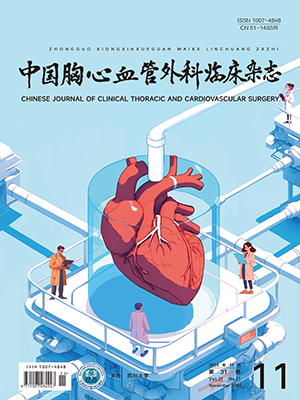Objective To study the development of a physiologic fixation method and investigate the effect of physiologic fixation method on porcine aortic root and aortic valve leaflets. Methods Physiological fixer of aortic root was manufactured in a factory. The fixers with different diameter were made of organic glass. Porcine aortic root with ascending aorta and anterior leaflet of mitral valve and partial ventricular septum were dissected out from the fresh heart. The roots were attached to appropriately sized inflow and outflow spigots. Physiologic fixation was utilized to maintain aortic root and leaflets natural anatomical shape, the aortic root was pressurized to the inflow and outflow portions simultaneously, and the leaflets floated freely at zero-pressure differential with in the pressurized root. Results The process of physiologic fixation retained the properties of a native valve. The leaflets were much softer and extensible than those from valves fixed under low pressure. The results of pulsatile flow testing indicated that the effective orifice areas of predilation at 80mmHg were significantly greater than those of predilation at 40 mmHg(P〈0.05), while mean pressure differences were found to be lower comparatively(P〈0.05). This difference translates into a mode of valve function that more closely approximates that of the native aortic valve. Conclusion Physiologic fixation process retains the valve's natural anatomical shape as well as the underlying structure of the leaflets, providing improved flow characteristics.
Citation: SONG Guangmin,CUI Jingwei,HU Shengshou,et al .. Development of Physiologic Fixation Method on Porcine Aortic Root and Aortic Valve Leaflets. Chinese Journal of Clinical Thoracic and Cardiovascular Surgery, 2006, 13(5): 322-325. doi: Copy




